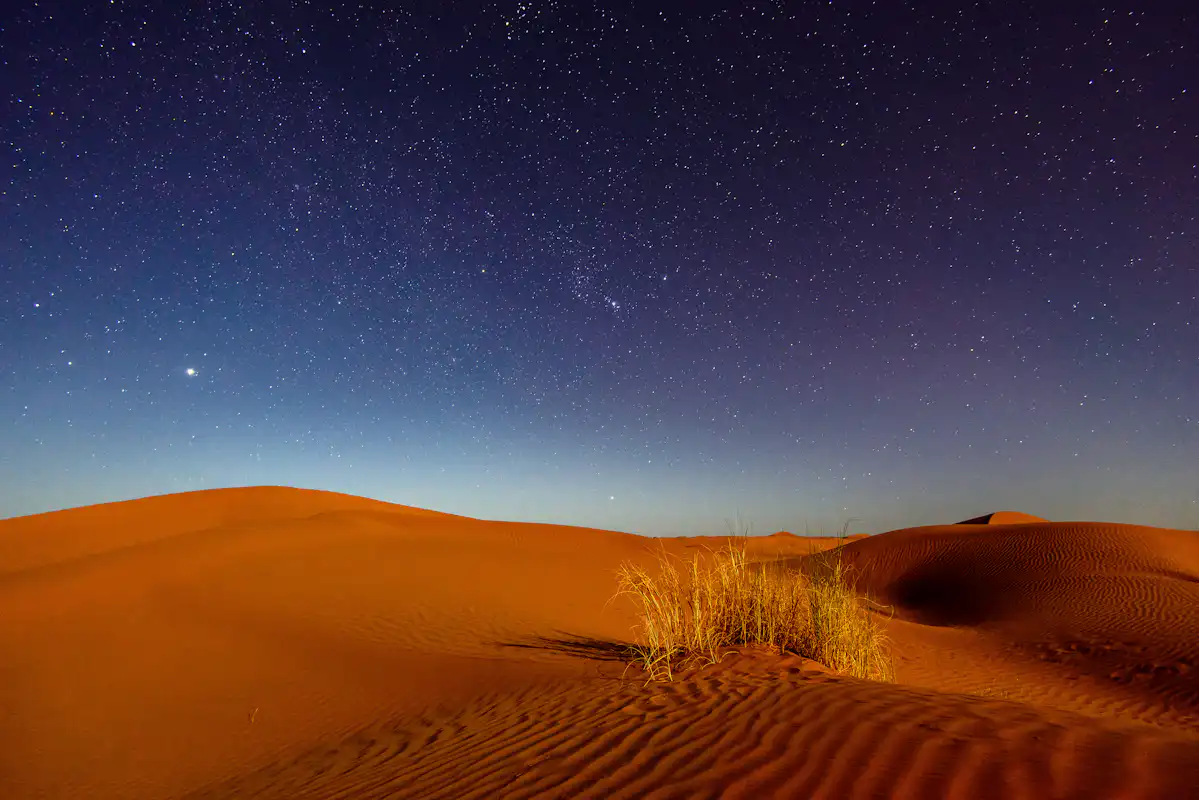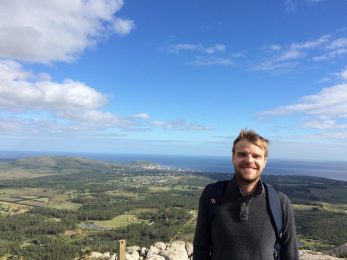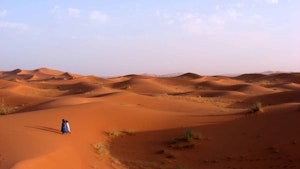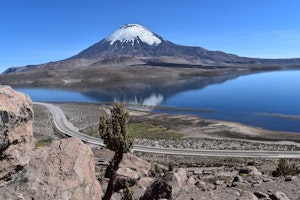For as long as there have been humans, they have turned to the skies for answers: when to harvest and plant crops, how to arrive at the next destination and what does it mean to be human.
Some of the world’s most iconic monuments were built according to the stars and many of our most famous explorers used the night sky to successfully navigate around the world.
In spite of the rapid advance of technology, which has largely replaced the night sky in daily tasks such as construction and navigation, the night sky still never fails to capture our attention and stimulate our minds.
In fact, ‘dark sky tourism’ was named as one of the top travel trends of 2019 by Lonely Planet. More and more people flock to international dark sky reserves, many of which are located in the mountains, to see celestial phenomenon and starry skies.
In order to get on board with the trend, we’ve included some useful tips for stargazing as well as some of the top mountains on which to do so on all seven continents.
Tips for stargazing in the mountains
While the act of stargazing may be simple enough, there are plenty of tips to ensure that you get the most out of this sublime and scintillating experience.

Among the most obvious of the tips is to get up high. Get out of the valley and onto a ridgeline or small summit in order to see as much of the sky as possible.
It is also highly recommendable to bring a pair of binoculars, a red flashlight and some star charts (or apps).
Binoculars are more portable and less expensive than telescopes. For wilderness stargazing, they’ll allow you to get clearer views of the celestial bodies for which you are looking. Meanwhile, a red flashlight is a good way to navigate in the dark without creating a lot of distracting – and polluting – light.
Star charts and stargazing apps are a good way to identify what exactly you are looking at. These will help you find constellations, distinguish planets from stars and maybe even identify the international space station.
Finally, the most useful tip any astronomer will give you: use your eyes and imagination. While it is always nice to know what you are looking at, sometimes the imagination is the greatest tool of all, allowing us to gaze upon the same largely-unchanged universe the way that our earliest ancestors did.
1| Canadian Rockies, North America
Running straight up through the United States into the heart of Canada, the Canadian Rockies – especially Banff National Park – are ripe for stargazing.

Located about 170 kilometers (105 miles) west of Calgary, the immense national park is home to wide open skies and pristine wilderness scenery.
The best way to experience the mountains, alpine meadows, forests and lakes of the park is to head out on a hut-to-hut trek. Regardless of the type of trek you do, you will be far away from any city or other significant sources of light pollution. The dry summer months also mean plenty of clear skies up above.
Each day, take in the incredible scenery as you trek far away from civilization and into the heart of the park. Once night has fallen, however, you are in for an equally stunning, although markedly different, experience.
Gaze up into the heavens and see some of the iconic celestial sights available in the Northern Hemisphere, including various planets, the Milky Way and countless constellations.
In the late autumn and early spring, it is also possible to see the Northern Lights from the park.
Best season: June to September
Location: About 170 kilometers (105 miles) west-northwest of Calgary, Alberta
Difficulty: Easy to intermediate
Don't hesitate a moment longer! Book your next stargazing and hiking adventure to Banff National Park right now!
2| Ojos del Salado, South America
Straddling the border between Argentina and Chile and surrounded by the imposing Atacama Desert, few places are better for stargazing in South America – indeed anywhere in the world – than Ojos del Salado.
Towering above its surroundings, the world’s highest active volcano rises to 6,893 meters (22,615 feet) above sea level. One of the best ways to experience its sublime night skies is to head out on a mountaineering expedition to its summit.
Because there are no trees to contend with on this mountain, you will have spectacular views of the southern night sky throughout the trip. In fact, the Atacama Desert has quickly become one of the world’s top spots for stargazing experiences.
Part of the reason why is the clear night skies, which ensure visitors will see plenty of stars. The other reason is the low population density. There are no towns or cities anywhere near Ojos del Salado, meaning no light pollution to compete with the brilliance of the stars.
Climbing to the top of the highest mountain in Chile, and the second tallest in all of South America, generally takes about two weeks. Each night, you will have the chance to sit outside a mountain hut and gaze skyward.
While you’re there, try and spot some of the most visible celestial sights, including the nearest stars to our solar system, two close dwarf galaxies, and innumerable unique and beautiful constellations.
Best season: Year-round
Location: About four hours west of Copiapó, Chile on Route 31.
Difficulty: Sustained
So what are you waiting for? Get ready for the stargazing and mountain climbing adventure of a lifetime on Ojos del Salado!
3| Pic du Midi de Bigorre, Europe
Situated in the heart of the French Pyrenees, Pic du Midi de Bigorre is one of the top stargazing spots in all of Europe.

The mountain, which rises to 2,877 meters (9,439 feet) in elevation, sits in the middle of Pyrénées National Park – the largest International Dark Sky Reserve in Europe.
Pic du Midi de Bigorre is also home to the famed Gentili telescope and the Pic du Midi Observatory. It was from this observatory that NASA scientists prepared for the 1969 Apollo moon landing.
Among the best ways to experience the sublime night sky from the peak is to head out on a ski touring experience. While summer is the most popular time to visit the mountain, coming in winter ensures there are fewer crowds, which means less light and more starry skies just for you!
During the winter months, Pic du Midi de Bigorre boasts plenty of incredible slopes and a lot of high-quality powder. Spend the day exploring the slopes on your skis before heading out into the wilderness one last time after sunset to see the incredible stars.
Best season: June to October
Location: The French Pyrenees, three hours southwest of Toulouse by car.
Difficulty: Intermediate
Don’t hesitate a moment longer and book your next ski touring and stargazing experience on Pic du Midi de Bigorre now!
BONUS: Snowshoeing & the Northern Lights
While Pic du Midi de Bigorre may be one of the best spots for stargazing in Europe it is certainly not the only one.
Numerous mountain ranges throughout the continent are renowned for their winter night skies. Not only do they last longer, but the winter oftentimes brings drier and clearer air to many of Europe’s major mountain ranges.
Planning to spend the winter in or around Madrid? Check out this 2-day snowshoeing and stargazing trip to the nearby Sierra de Gredos!
As a result, evening snowshoeing trips throughout the continent have become increasingly popular.
Local guides tend to know the best spots to see the stars and are adeptly able to bring small groups far away from the lights of mountain huts and hotels in order to take in as much of the sublime European night sky as possible.
Thinking about heading to the Alps for some night time snowshoeing? Check out this snowshoeing and stargazing trip in Chamonix!
Heading farther north to Scandinavia, stargazing trips can be combined with tours to see the Northern Lights.

The incredible phenomenon known as the Northern Lights is caused by solar wind-induced disturbances in the magnetosphere which ionize charged particles to form a spectacular array of colourful lights. From November to March is the best time to head out and see this celestial phenomenon.
Pair the appearance of the Northern Lights with some nights of stargazing and you’re in for an incredible treat, especially above the 66th parallel.
Heading to northerly Tromsø, Norway or Abisko, Sweden is among the best ways to see some of the most spectacular night skies of your life!
4| Mount Toubkal, Africa
Rising to 4,167 meters (13,671 feet), Mount Toubkal is not only Morocco’s highest peak but it is also one of the top stargazing destinations on the whole continent.

Trekking to the foot of the mountain followed by a steep, but non-technical ascent, is one of the best ways to get out into the heart of the Atlas Mountains and enjoy some incredible stargazing.
The path to Toubkal leads through deserted mountain passes and rugged valleys. Along the way, you will either stay in mountain huts or have the option to camp. Either way, the path is far away from civilization and the air is often dry and clear, leading to incredible night skies.
Many visitors to Mount Toubkal may also opt to head a bit farther south through the Atlas Mountain range to the spectacular Sahara Desert (in fact, some trips begin from the desert). Here, there are options to camp in the dunes.
Once the sun has set over the desert sands, the views of the night sky are simply incredible. The Sahara is one of the best places on earth to see the Milky Way galaxy and a plethora of other celestial objects.
Best season: Year-round
Location: Just under 100 kilometers (62 miles) south of Marrakech
Difficulty: Sustained
Hesitate no longer and book your next stargazing and trekking experience to the summit of Mount Toubkal today!
5| The Himalayas, Asia
Separating the Indian subcontinent from the rest of Asia, the Himalayas are home to the world’s tallest and some of its most scenic mountains.

Boasting the 10 of the 14 peaks over 8,000 meters (26,250 feet) and 50 others over 7,200 meters (23,600 feet) tall, this inhospitable mountain range is perfect for mountain climbing, trekking and, especially, stargazing.
The best part? These activities can be easily combined. In fact, one of the main attractions for any mountaineering trip to Nepal is the stargazing.
Nepal is consistently ranked as one of the top stargazing destinations anywhere on earth. Heading deep into the mountains, far away from any cities or villages, brings the promise of unimpeded skies and no light pollution.
However, the incredible stargazing is not limited to Nepal. The section of the Himalayas that runs through India is also perfectly located for stargazing.
Numerous mountain climbing, trekking, and ski touring trips to India include stargazing components. Conveniently, the top spots for stargazing – such as Leh, Uttarakhand and Jammu and Kashmir – are also home to the most popular hiking and best mountain resorts that India has to offer.
Just to the north of Nepal and India is Tibet (China). Tibet sits on a highly elevated plateau and is sparsely populated as well, both of which make stargazing here all the more rewarding.
Most mountaineering trips in Tibet double as excellent stargazing opportunities. Heading out well above the plateau and into the Himalayan mountain peaks gets you up nice and close to every shining star in the entire Milky Way!
Best season: September to November, March to April
Location: Northwest India, northern Nepal and southern Tibet (China)
Difficulty: Intermediate to Advanced
6| Mount Cook, Oceania
Situated in the heart of the Southern Alps on New Zealand’s South Island, Aoraki-Mount Cook is an incredible mountaineering and stargazing experience.

Rising to 3,724 meters (12,218 feet) the climb is technically quite challenging, as the mountain is covered by a thick glacier. The ascent takes about a week and involves some strenuous hiking and intense ice climbing.
However, the views along the way up and from the top are exquisite, with pristine mountain scenery stretching in every direction.
Each night, you will stay in a mountain hut, biodome or camp. From these vantage points, you’ll get plenty of incredible views out over the Milky Way as well as of one of the most iconic Southern Hemisphere constellations.
The mountain is also home to an International Dark Sky Reserve. Either before or after your mountaineering expedition, make some time to visit the reserve and enjoy the incredible views of the heavens.
“To put it simply, it is one of the best stargazing sites on earth,” says Bob Parks, Executive Director of the International Dark-Sky Association.
Best season: November to April
Location: In the Canterbury region of New Zealand, 3.5 hours west of Christchurch by car
Difficulty: Advanced
So what are you waiting for? Book your next mountain climbing and stargazing adventure on Aoraki-Mount Cook right now!
7| Antarctica
The combination of dark skies, calm air and no light pollution makes Antarctica the perfect spot for any stargazing trip.
![]()
In fact, a ridge on the interior of the continent was recently recognized as the best place on earth for gazing up at the heavens. However there is only one problem, humans have yet to set foot on the ridge (and for good reason, temperatures during the winter sit at around -67 ºC (-90 ºF))!
Since you likely won’t make it there, the outer ice shelves of the continent work well enough and can be reached via Punta Arenas, Chile.
Getting to Antarctica during the autumn or spring (when it is still dark, but slightly less cold) will require finding a guide to take you. For that, we recommend experienced polar explorer Dixie Dansercoer.
Ski touring is the recommended way to get around the edge of the continent. As you go, enjoy unimpeded views of the sky – Antarctica has the lowest levels of air pollution of anywhere on earth, meaning the clearest skies and some of the best views of the stars anywhere on earth.
Best season: March and September
Location: Antarctica Peninsula, which is the part of the continent closest to South America
Difficulty: Intermediate








